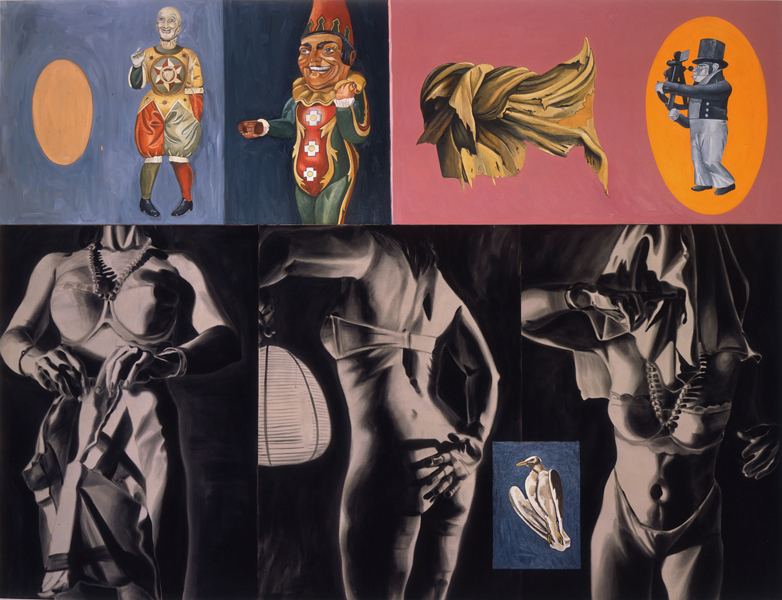The Egyto-Roman World
Style
Around the time this painting was made, in 1987, David Salle had been going through a period of personal turmoil and his paintings reflected this. Sextant in Dogtown, for example, had darker colors and made use of shadows. The colors in his other paintings were mostly blacks, deep browns, and only the occasional splash of bright color. In contrast, The Egypto-Roman World incorporates bright colors such as oranges, greens, reds, and blues. The other paintings were more grim and centered around darker scenes, while the painting before you depicts nature, dance, and food—all of which are generally associated with satisfaction or happiness. However, there are shadows of his darker paintings hidden within the style of The Egypto-Roman World, in the form of the two dancers. The two dancers are painted against a solid background and are depicted as shadowy figures. In addition, the red bubble with bones in it also hints at a darker message.

David Salle (1952-), Sextant in Dogtown, 1987.Oil and acrylic on canvas, 96 3/16 × 126 1/4 in. (244.3 × 320.7 cm). Whitney Museum of American Art, New York; Purchase, with funds from the Painting and Sculpture Committee, 88.8a-e. Art © David Salle/Licensed by VAGA, New York, NY, www.vagarights.com.
David Salle is one of many contemporary artists who mix different mediums. Within The Egypto-Roman World, he uses acrylic paint, oil paint, and printing ink on photo linen. The dancers are painted using oil paint, the French bread is painted using acrylic paint, and the small image in the center is made with printing ink on photo linen. The variations help viewers understand and differentiate the layers and contrasts within. While each piece is unique, Salle uses these elements to complement each other, which accounts for the interesting contrast between the different sections.
